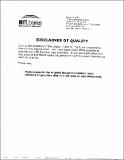| dc.contributor.advisor | Richard O. Hynes. | en_US |
| dc.contributor.author | Lively, Julie C. (Julie Christina), 1971- | en_US |
| dc.contributor.other | Massachusetts Institute of Technology. Dept. of Biology. | en_US |
| dc.date.accessioned | 2005-08-23T19:45:22Z | |
| dc.date.available | 2005-08-23T19:45:22Z | |
| dc.date.copyright | 2002 | en_US |
| dc.date.issued | 2002 | en_US |
| dc.identifier.uri | http://hdl.handle.net/1721.1/8386 | |
| dc.description | Thesis (Ph.D.)--Massachusetts Institute of Technology, Dept. of Biology, 2002. | en_US |
| dc.description | Includes bibliographical references (leaves 199-219). | en_US |
| dc.description.abstract | A method was developed to isolate and purify primary murine endothelial cells from lung tissue (MLEC). The cells generated by this method were characterized by immuno-fluorescence detection and FACS analysis and expressed specific antigens including PECAM-1, ICAM-1, ICAM-2, VCAM-1 and VE-cadherin. Using this method, cells from wild-type and beta 3-integrin-deficient animals were purified and used to determine the specificity of a novel potential anti-angiogenic drug. This study shows that tumstatin, a fragment of the alpha 3 chain of collagen IV, inhibits proliferation, inhibits total protein synthesis and specifically inhibits CAP-dependent protein synthesis in MLEC. These effects do not occur when beta 3-null MLEC are treated with tumstatin or any of its derivatives. Nor do they occur in mouse embryonic fibroblasts which do express beta 3 integrin. The inhibition by tumstatin also occurs in in vivo angiogenesis assayed using a Matrigel plug insert. Similarly to in vitro assays, tumstatin failed to inhibit angiogenesis in beta 3 integrin-deficient animals. These results suggest that avf33 integrin is necessary but not sufficient for the activity of tumstatin. Further studies are required to identify avf33 integrin-associated factors in endothelial cells which determine tumstatin's endothelial cell specificity. Matrigel plug assays were also used to demonstrate that the loss of beta-3 integrin enhanced VEGF-induced angiogenesis. Results also show that VEGF-induced angiogenesis was enhanced in aortic ring explants from beta 3-null animals. These data suggest a new role for beta 3 integrin as a negative regulator of angiogenesis, both as a receptor for an endogenous inhibitory molecule and as an inhibitor of VEGF-induced angiogenesis. | en_US |
| dc.description.statementofresponsibility | by Julie C. Lively. | en_US |
| dc.format.extent | 219 leaves | en_US |
| dc.format.extent | 18261845 bytes | |
| dc.format.extent | 18261601 bytes | |
| dc.format.mimetype | application/pdf | |
| dc.format.mimetype | application/pdf | |
| dc.language.iso | eng | en_US |
| dc.publisher | Massachusetts Institute of Technology | en_US |
| dc.rights | M.I.T. theses are protected by copyright. They may be viewed from this source for any purpose, but reproduction or distribution in any format is prohibited without written permission. See provided URL for inquiries about permission. | en_US |
| dc.rights.uri | http://dspace.mit.edu/handle/1721.1/7582 | |
| dc.subject | Biology. | en_US |
| dc.title | Beta 3 integrins : negative regulators of angiogenesis | en_US |
| dc.title.alternative | β3 integrins : negative regulators of angiogenesis | en_US |
| dc.type | Thesis | en_US |
| dc.description.degree | Ph.D. | en_US |
| dc.contributor.department | Massachusetts Institute of Technology. Department of Biology | |
| dc.identifier.oclc | 50575368 | en_US |
